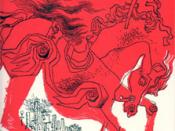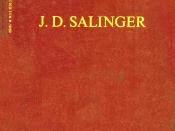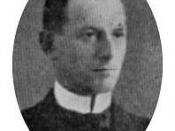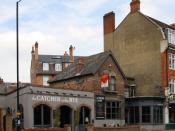Though simply written, the "Catcher In The Rye"ÃÂ encompasses quite sophisticated meanings and symbols. J.D Sailinger seems to have succeeded in creating a symbolic environment for the novel, where everything and everyone represents a thing or epitomizes an idea. From the beginning of the novel, the author incorporated symbolism as an intricate and necessary tool for conveying the full scope of his tale.
Perhaps one of the greatest symbolisms expressed in the novel is what is known as "name symbolism."ÃÂ Holden Caulfield is not just a name. Because of his perspective of life where everyone is a "phony,"ÃÂ the name Holden, in a way, shows that he "is "ÃÂholden' back, not allowing himself to become part of the ugliness and viciousness he sees in the world of adulthood."ÃÂ His last name, Caulfield, has a lot to do with the theme of childhood and innocence expressed throughout the novel.
A "caul"ÃÂ is part of a membrane around the head when a child is born. This symbolizes comfort and protection for children. "field"ÃÂ represents the rye field where Holden wishes to become the "Catcher In The Rye"ÃÂ who saves children form falling off and entering the hypocritical and "phony"ÃÂ world of adulthood and maturity. This symbolism is equivalent to that of the novel's title.
Throughout the novel, one can observe the diverse symbols represented by people and objects. Some symbols include the ducks and fish in the pond, Holden's red hunting hat, the museum where he waits for Phoebe, the street he crosses where he experiences mental illness, his sister Phoebe, and the record he buys her. Holden asks multiple people about the where the ducks and fish go when the pond freezes in winter, the current season in the setting of the novel. He asks many cab drivers and one of them says that the fish just stay put under the ice. He quotes: " They live right in the goddam ice. It's their nature for Christ's sake. They get frozen right tin one position for the whole winter."ÃÂ (85) The symbolism here is that the ducks represent Holden, and the fish represent everyone else. Holden must leave Pency, for he has been kicked out. He does not know where to go and neither do the ducks in the pond. The fish, however, just stay where they are like everyone else in Pency. Holden's hat symbolizes his unique personality and his attraction to bizarre objects. It is a symbol for his quest to find love and passion that he is always hunting and searching for. The museum where Holden waits for Phoebe symbolizes his desire for things to become constant and still. The street he crosses symbolizes the greatest turning point on his life, where he crossed from the world of childhood to adulthood and becomes a mature person. His sister, Phoebe, is one of the greatest symbols of innocence and childhood throughout the novel. As for the record he buys her, he is deeply saddened when it breaks because, in a way, it symbolizes that his life has broken too. " I damn near cried, it made me feel so terrible, but all I did was, I took the pieces out of the envelope and put them in my coat pocket. They weren't any good for anything, but I didn't feel like just throwing them away."ÃÂ (154) This quote about the record, in a sense, summarizes how Holden feels about his life. He is trying to send out a message that he feels bad about his useless life, however he does not wish to throw it away.
Although "Catcher in the Rye"ÃÂ is simply about a disturbed teenage boy, it has many complex meanings and symbols woven into it. The author uses seemingly unimportant details and actions by characters, which are, in fact, great symbols in the plot. The characterization of Holden plays a substantial role in helping discover most of the symbolism in the novel.





